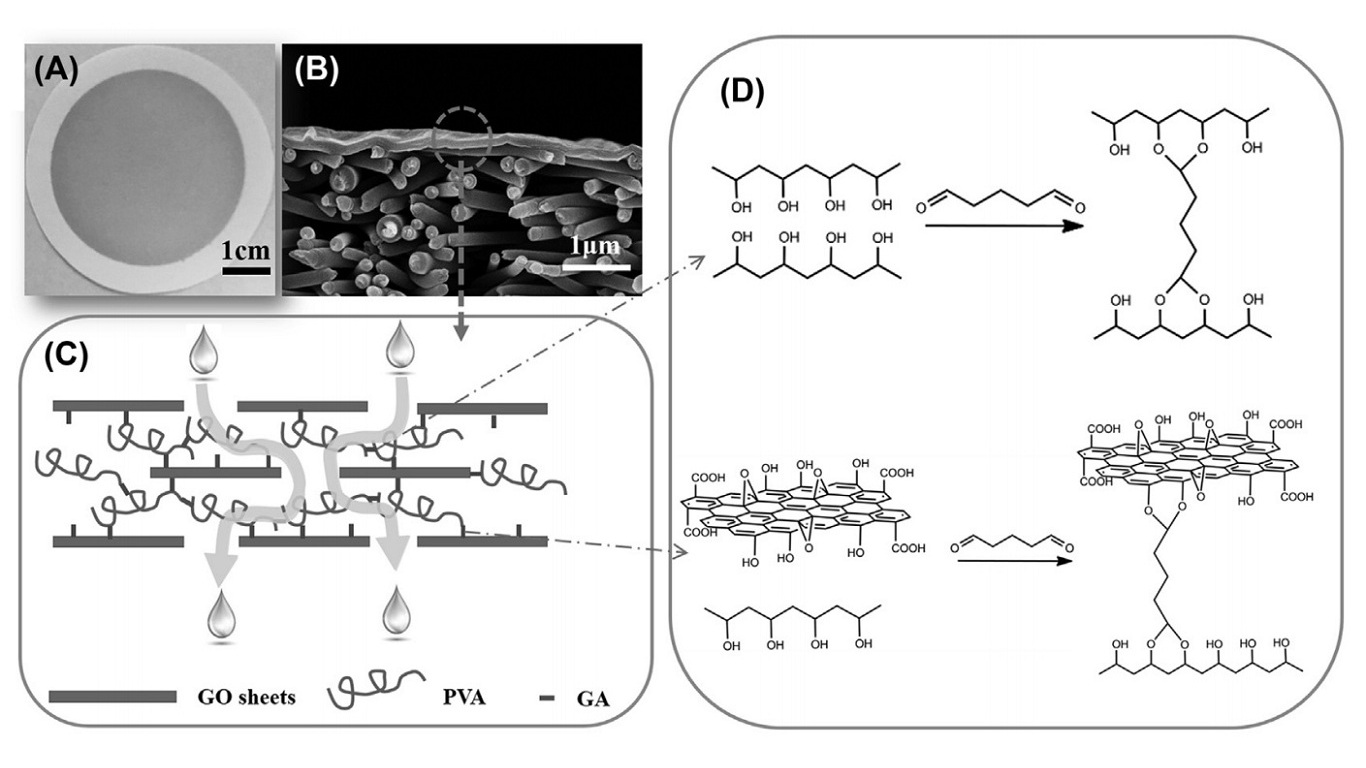Research on desalination via pervaporation has become more and more active in recent years; this method has the advantage of a high rejection of salt and the capability of coping with high-salinity solutions. Liang et al. developed a TFNC membrane for pervaporation desalination by sequential deposition employing an electrospraying/electrospinning technique. A crosslinked PVA barrier layer with a thickness of 700 nm on a PAN nanofibrous substrate displayed excellent desalination performance (i.e., high water flux and a salt rejection ratio >99.5%) for different salt concentrations. GO has attracted great attention for membrane separation, as mentioned earlier, especially in the field of pervaporation application. But it is a big challenge to prepare a stable GO layer on a highly porous nanofibrous support because of the undulating surface caused by the fibrous structure. To solve this problem, Cheng et al. demonstrated a novel TFNC membrane consisting of an electrospun PAN nanofibrous substrate and a robust GO barrier layer for pervaporation desalination application. As shown in Figure, the stacked GO nanosheets were successfully interlinked with sufficient bonding by GA with the aid of a flexible connector, PVA, which acted as the spacing bridges to provide adequate stability in a water environment. Thanks to the superiority of a peculiar ultrathin hydrophilic GO skin layer and a fully interconnected porous nanofibrous substrate, the optimized TFNC membranes exhibited an excellent permeate flux of 69.1 L/m2h and a stable high rejection (99.9%) over a testing period of 24 h using an aqueous salt solution with NaCl concentration of 35 g/L at 70℃, which was superior to homogeneous membranes and composite membranes applied in pervaporation desalination reported so far.


